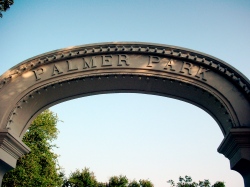We leave in just a few days. And we are in that period before a big trip when time seems to compress. Why, just last week it seemd there was plenty of time to get everything done. Yesterrday, though, it started to seem like there was no time. And today feels even more compressed.
Which is why I found myself perusing the hellodamage.com underground travel guide to Tokyo. Just a little distraction from The Job. Amazing what this guy has turned up. In Nakano, “a pretty excellent neighborhood”, there is a mall or sorts that has on the first floor “a store which only sells stuff which people have accidentally left on trains. it is full of anthropological / tragic goodness. just ask any storekeeper for the WASUREMONO MISE, DOKO DESUKA? ONEGAISHIMASU. ” I certainly intend to do that.
Also not to be missed, or messed, is “Rope burusera — used panty store. has to be seen to be believed.” Maybe. In Shibuya.
And how did I even find this weird site (hellodamage.com travel guide)? Just searching for something completely different–some mosaic that a friend of Karen created in the Pink Dragon building in Shibuya, a building that has a 3-floor rockabilly costume shop and a good Thai resto underneath. Ja matta.








